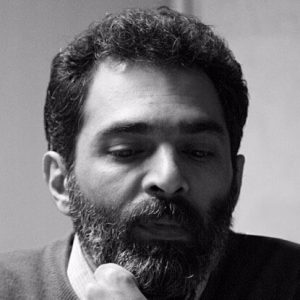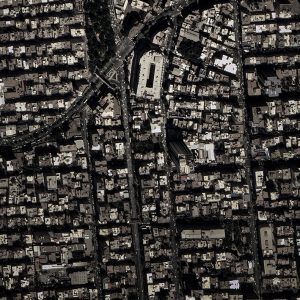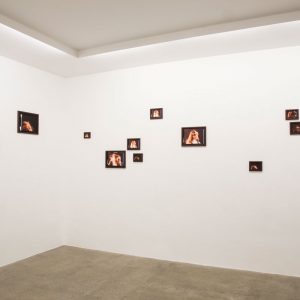

Peyman Hooshmandzadeh is known outside Iran mainly as a photographer, but in Iran he is equally known and popular as a writer. He is interested in signs. Most of his photographs seek those semiotic fragments that are capable of betraying the whole. He identifies the key by which a person’s or a culture’s psychology and dynamics may be grasped. In fact, his signs are laden with economic and historical information. The cultural and sociological identities of his subjects are communicated through the smallest of their attributes and reflect road maps to the psyche of the people and the culture that the images represent. They potently speak of the economic class, religious beliefs, and cultural background of the subjects. In his works, identity is not a matter of some broad metaphysical assertion (e.g., nationalism, religion, or gender) but a given and imposed phenomenon engendered by the most quotidian and insignificant of signs. We learn that at the end of the day, we are the sum of our material lives rather than of our declared spiritual outlooks. Reality is revealed through banal and often ignored cultural codes and suddenly acquire identities as deep and wide as Iran’s history and its traditions. In Peyman’s works, ordinary and insignificant men have become the mirror of the broadest cultural experience. They are in fact canonical of Iran’s concepts of masculinity, middle-economic aesthetics, poverty, and more. His photographs have been presented in books and exhibits in Iran and internationally. His photography style ranges from photojournalism to documentary work to art photography. He, however, says he hates photojournalism, “cannot not do” art photography, and considers himself mainly a documentary photographer. His two books of photography are documentary works. One Hundred Photographs (2009) documents people (mainly men) frequenting tea houses, Shuka Café, the Gomrok quarter of Tehran, and traditional Zoorkhaneh sports centers. A People of Horse (2015) documents the lives of the Turkmen people of the northern region of Turkmen Harbor, Iran. What was Your Death for? (2019) presented sixty of his single black and white images taken all across the world on his travels of the bitter and sarcastic moments of people’s lives. As a writer, too, Hooshmandzadeh has a tendency to document the everyday, in a style he calls “hyperreal.” He has published two collections of interconnected stories. Warming One’s Hands won first place for the “Printed Press’s Critics and Writers Award” in 2007 and is now in its twelfth edition. Horn won first place in the short story category in the Roozi Roozegari Literary Award; in its second edition, the book was banned from further publication by the Iranian Ministry of Culture and Islamic Guidance. He also has a book of shorter writings and notes, Deleted by Drunkenness, which he hand wrote in a limited edition of one hundred copies. His most recent book, The Pleasure in Question, which reached its third edition in less than three months, is a book about photography that includes not one picture but comes to life instead through autobiographical stories related to photography. Hooshmandzadeh moves back and forth between these two modes of artistic expression, photography and writing. At the beginning of his career, he tried to keep the two separate, but he grew to realize that it was not possible and began to gradually welcome the erasure of boundaries. But even now he tries to hold on to some separation. When asked to provide a note for the photographic series Memories, he explained that he does not like to write about his photographs and wants the images to speak for themselves or to be spoken for by viewers.

